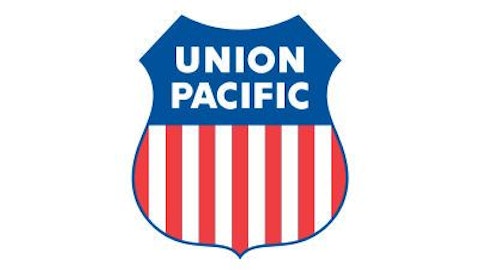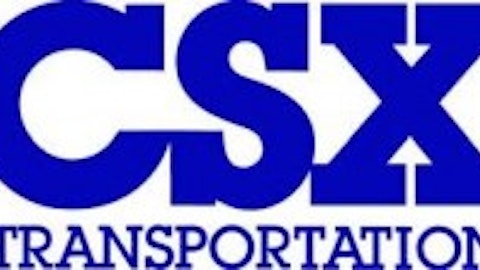3.) Automotive – The double digit gains in automotive freight for all four companies give evidence of the improving macro-economic conditions. According to the Federal Reserve website, auto and light truck assemblies increased 20% in 2012.
| Automotive segment revenue change for 2012 | ||||
| Norfolk Southern (East) | CSX (East) | Kansas City Southern (Midwest) | Union Pacific (West) | |
| Automotive | 15% | 23% | 25% | 20% |
Source: Compiled from SEC documents
Increased business spending, better credit access and overall consumer confidence served as catalysts for increased automotive freight. Increased payroll taxes and cutbacks in government spending could dampen this segment for it would take money out of the pockets of the collective car buyer.
4.) Chemicals – Growth in demand for oil, plastics and industrial chemicals contributed to gains in the chemical segments (see table below). Union Pacific increased its chemical segment by 15% with petroleum contributing the most to the gain.
| Chemicals segment revenue change for 2012 | ||||
| Norfolk Southern (East) | CSX (East) | Kansas City Southern (Midwest) | Union Pacific (West) | |
| Chemicals | 7% | 5% | 7% | 15% |
Source: Compiled from Sec documents
This segment will continue to benefit from ever increasing global demand for energy and the drive for domestic energy production. Union Pacific operates near oil producing areas in the U.S. giving it an extra advantage.
5.) Industrial Products – Industrial products also served Union Pacific and Kansas City Southern well with 10% growth rates. The housing recovery contributed highly to this segment with a boost in lumber and rock freight. If the housing recovery sustains itself, this segment will continue to benefit railroads.
| Industrial products segment revenue change for 2012 | ||||
| Norfolk Southern (East) | CSX (East) | Kansas City Southern (Midwest) | Union Pacific (West) | |
| Industrial Products | 6%* | 3%** | 10% | 10% |
*Includes Paper, clay, metals and forest products
**Includes metals and forest products
Source: Compiled from SEC documents
6.) Intermodal – Railroads compete in the vital logistical market of moving goods from ports and distributors into the hands of retailers. The intermodal segment increased by double digits for all the railroads except Norfolk Southern (see table below). Intermodal or box freight serves an important role in the American infrastructure and is an important avenue of growth for the railroad industry.
| Intermodal segment revenue change for 2012 | ||||
| Norfolk Southern (East) | CSX (East)
| Kansas City Southern (Midwest)
| Union Pacific (West) | |
| Intermodal | 5% | 11% | 22% | 10% |
Source: Compiled from SEC documents
The ability to steal business from on-the-road trucking contributes to the intermodal segment for the railroads. A shortage of skilled truckers gives railroads an advantage in accomplishing just that. Considering America imports more goods than any other country, railroads will continue to gain from this trend assuming they can maintain the leg up over other modes of transportation.
Which company stands out?
The best railroad will possess the most diverse form of freight as different segments of the economy wax and wane. For example, if chemicals go into a slump you wouldn’t want a railroad to derive 80% of its revenue from chemical freight. The same goes for coal, automotive, etc. Here’s how the railroads breakdown by 2012 revenue.
Looking at the pie charts below, Union Pacific wins the contest for diversity; however, its automotive segment leans a little to the light side with only 9%. Industrial products make up a disproportionate percentage of Kansas City Southern’s revenue. Coal tips the balance for CSX and Norfolk Southern comprising 27% and 26% of total revenue for those two companies which, consequently, gave the worst numbers this past quarter due to weakness in demand.

Source: Kansas City Southern data compiled from SEC documents

Source: CSX data compiled from SEC documents
Looking forward
To sum it up, continued softness in coal will continue to drag on the rail industry as a whole. If drought conditions continue, the agricultural segment will also suffer. The continued drive for domestic energy production and global appetite for energy will drive the chemical segments. The housing recovery will boost lumber and rock freight. Imports and on-the-road driver shortages will benefit railroads. Union Pacific stands out on top as it possesses even exposure to all types of freight.
The article Earnings Recap: One Railroad Stands Out originally appeared on Fool.com and is written by William Bias.
Copyright © 1995 – 2013 The Motley Fool, LLC. All rights reserved. The Motley Fool has a disclosure policy.




